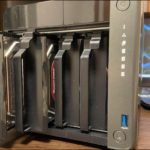Alas, dear reader, the title of this article is a bit misleading. There is no longer a NAS operating system named FreeNAS, nor one named simply TrueNAS. They exist under new monikers, but it’s a question that’s still asked quite a bit, hence we thought it deserved an answer. But first, the news!
As of October 2020, the openly developed, cutting edge FreeNAS became TrueNAS CORE; TrueNas, the in-house dual-node variant developed by curator iXsystems for their own hardware and business use became TrueNAS Enterprise; and a third multi-node variant, TrueNAS SCALE, was added.
Additionally, on same date, the two existing projects plus SCALE were folded into a single unified project rather than existing as two separate projects. They’re all still based on FreeBSD and OpenZFS, and all three are curated by iXsystems.
Why the Name Change?
The parade of name changes likely stemmed from the “Free” in FreeNAS Pro, which was the original name for what became the iXsystems-developed business version. Being available only when you bought the company’s hardware, some might have interpreted the moniker as a bit disingenuous. That explains the lofty title of TrueNAS.
But why TrueNAS CORE rather than FreeNAS, which is still free? First, there’s the whole kissing cousin NAS operating systems that sounded like competitors. Then, there’s the aforementioned convergence of the development into one project. Also, according to iXsystems, there is a perception among some that anything free has to be inferior.
From my own experience, I can tell you that despite the fact that much of the world runs on free operating systems (Linux, FreeBSD, etc.) or variants thereof (Android, macOS, etc.) some business types just aren’t comfortable with the word “free”. Unless of course it’s leveraging that free stuff under their own branding.
You probably noticed that CORE is all caps. It’s an acronym, of course. In this case, Community supported, Open Source, Rapid development, and Early availability. Descriptive, and of course, all-CAPS jumps out on the page.
Variants in Detail
TrueNAS CORE is the single-node version of the NAS OS which is dedicated to experimentation, adding and developing new features, and generally pushing the envelope. It’s also the one most end-users will want to download and play with.
TrueNAS Enterprise, despite not having a sexy acronym in its name, offers quite a few perquisites for business users seeking stability and maximum up time. That includes dual nodes via redundant controllers, fiber channel support, KMIP, and certifications for VMware, Veeam, Citrix etc. Free support is included, but you can upgrade that with a variety of pay options.
TrueNAS SCALE is an acronym for Scale-Out ZFS, Converged storage and compute,
Active-Active operation, Linux Containers, and Easy to manage. That’s shouting quite a mouthful, but the company makes its point. The point being that this version is multi-node and can scale out, that is, allow you to add more hardware to the mix, not just replace and upgrade (upscale).
Like CORE, SCALE is free and downloadable. Also like CORE, there’s a community involved in development.
To summarize…
- FreeNAS — no longer exists except as a popular name and a website steering you to TrueNAS.
- TrueNAS CORE — the former FreeNAS, single-node, and dedicated to pushing the development and feature envelope.
- TrueNAS Enterprise — the former TrueNAS, available only on iXsystems hardware. Dual node and focused on up time/reliability for business and corporate use.
- TrueNAS SCALE — Like CORE, freely available, but multi-node to allow scaling out of hardware, i.e., adding new hardware and nodes, rather than just expanding the existing hardware.

Related: FreeNAS vs UNRAID: What are the Differences?










